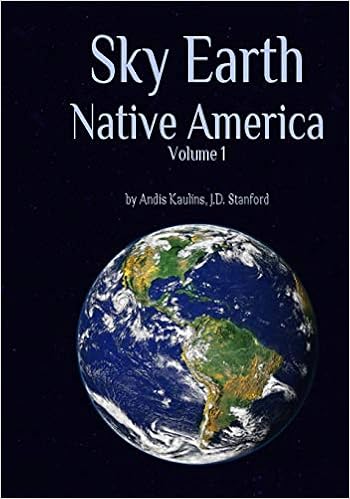One critical area of scientific inquiry that bears directly on our ongoing
analysis of ancient rock art, megaliths, mounds, earthworks etc. as land
survey markers sited by astronomy is the question of human spatial and
geographic orientation in a given environment and the role of systems of reference used for this purpose. Far too little research has
been devoted to this topic and it is the kind of thing that research
foundations should be sponsoring and funding.
We refer here to fundamental articles in Robert B. McMaster & E.Lynn Usery (eds.), 2004/2005. A Research Agenda for Geographic Information Science, CRC Press, Boca Raton, Florida, 402 p., ISBN-13: 978-0849327285 ISBN-10: 0849327288, eBook ISBN 978-1-4200-3833-0
and especially to Chapter 3 by Daniel R. Montello and Scott Freundschuh on the Cognition of Geographic Information, where they write, inter alia:
We refer here to fundamental articles in Robert B. McMaster & E.Lynn Usery (eds.), 2004/2005. A Research Agenda for Geographic Information Science, CRC Press, Boca Raton, Florida, 402 p., ISBN-13: 978-0849327285 ISBN-10: 0849327288, eBook ISBN 978-1-4200-3833-0
and especially to Chapter 3 by Daniel R. Montello and Scott Freundschuh on the Cognition of Geographic Information, where they write, inter alia:
"Cognitive research about space and place has focused on several issues: the responses of sensory systems that pick up spatial information, the development of spatial knowledge from birth to adulthood (ontogenesis) and upon first exposure to a new place (microgenesis), the accuracy and precision of knowledge about distances and directions, spatial language, cognitive structures and processes used during navigation, and perceptual and cognitive issues in cartography, and very recently, GIS. With the advent of new technologies like GIS, new questions about spatial perception and cognition develop, and old questions (both basic and applied) become focused in new ways.
One of the most basic concepts in this area is that of the cognitive map. Introduced by Tolman (1948) in his work with rat spatial behavior, the cognitive map is a mental representation, or set of representations, of the spatial layout of the environment. According to Downs and Stea (1973), “cognitive mapping is a process composed of a series of psychological transformations by which an individual acquires, stores, recalls, and decodes information about the relative locations and attributes of phenomena in his [or her] everyday spatial environment” (p. 9). The cartographic map thus serves as a metaphor for spatial and environmental knowledge. Other metaphors have been offered as well, from topological schemata to cognitive collage (see Montello & Freundschuh, 1995). GIS and virtual reality provide our latest metaphors for environmental knowledge.
Cognitive researchers are interested in comparing various sources of geographical knowledge. Montello and Freundschuh (1995) review the characteristics of acquiring knowledge from direct environmental experience, static pictorial representations such as maps (see Thorndyke & Hayes-Roth, 1982), dynamic pictorial representations (movies, animations), and language (see Taylor & Tversky, 1992). Montello and Freundschuh listed eight factors that may play roles in differentiating these sources of geographic information: sensorimotor
systems involved, static vs. dynamic information, sequential vs. simultaneous acquisition, the arbitrariness of symbols, the need for scale translations and their flexibility, viewing perspective, precision of presented information, and the inclusion of detail varying in relevance.
It is commonly thought that spatial knowledge of the environment consists of three types of features: knowledge of discrete landmarks, knowledge of routes that connect landmarks into travel sequences, and configurational or survey knowledge that coordinates and metrically scales routes and landmarks. In fact, inspired by Piagetian theory, it has often been suggested that these features represent a necessary learning sequence (Siegel & White, 1975; for an opposing view, see Montello, 1998). Landmarks in particular are thought to play an important role as anchor-points or reference points for the organization of environmental knowledge (Sadalla, Burroughs, & Staplin, 1980; Couclelis, Golledge, Gale, & Tobler, 1987).
Spatial cognition researchers have studied human navigation and orientation (Golledge, 1999). Navigation is coordinated and goal directed movement through space. It may be understood to consist of both locomotion and wayfinding processes.
Locomotion refers to perceptual-motor coordination to the local surrounds, and includes activities such as moving towards visible targets and avoiding obstacles.
Wayfinding refers to cognitive coordination to the distant environment, beyond direct sensorimotor access, and includes activities such as trip planning and route choice. Humans navigate and stay oriented both by recognizing landmarks (piloting) and by updating their sense of location via dead reckoning processes
(Gallistel, 1990; Loomis, Klatzky, Golledge, & Philbeck, 1999). Some of these processes are relatively automatic (Rieser, Pick, Ashmead, & Garing, 1995), while others are more like conscious strategies (Cornell, Heth, & Rowat, 1992).
A fundamental issue about human orientation concerns the systems of reference that people use to organize their spatial knowledge. Various possible systems have been discussed, including those that encode spatial relations with respect to the body, with respect to an external feature with or without differentiated appearance, or with respect to an abstract frame like latitude-longitude (Hart & Moore, 1973; Levinson, 1996). Several researchers have investigated reference systems within the context of verbal route directions (Allen, 1997)."


